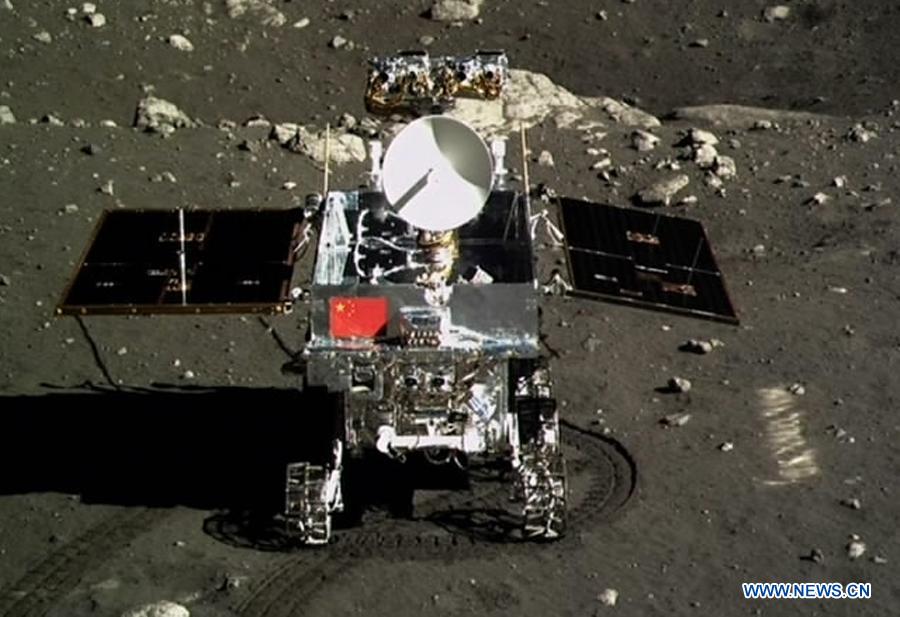

The Chinese moon rover Yutu, or Jade Rabbit, has identified a new type of moon rock, according to a study published Tuesday in Nature Communications.
The Yutu rover had poked around a region that's been reshaped by volcanic activity relatively recently. After analyzing the data from the Yutu rover, a group of Chinese and American scientists say in the paper that this region's composition differs from other mare sample-return sites and is a new type of mare basalt not previously sampled.
According to the Washington Post, until now, basalts sampled from the moon all had either very low or very high titanium content. By examining the comparatively young rocks uncovered by an impact crater, Yutu found basalts with intermediate levels of titanium and high iron levels.
"The variable titanium distribution on the lunar surface suggests that the Moon's interior was not homogenized," Washington University's Bradley L. Jolliff, who collaborated with Chinese scientists to analyze the rover's data, said in a statement.
The study is expected to throw new light on the origins of Earth’s nearest neighbor. In addition to showing the unexpected diversity of the moon, the results could help scientists do a better job of studying its surface from orbiters.

Yutu is part of China's Chang'e-3 moon mission, which delivered the rover and a stationary lander to the lunar surface in Dec., 2013, marking the first moon landing since the Soviet Union's Luna 24 mission in 1976.
Day|Week

 Spectacular aerial photos of the Three Gorges
Spectacular aerial photos of the Three Gorges Admit it! That is a High-way built by China
Admit it! That is a High-way built by China Photos of Beijing Film Academy student hit the Internet
Photos of Beijing Film Academy student hit the Internet Spectacular aerial photos of the Three Gorges
Spectacular aerial photos of the Three Gorges New balls please! Polish sports stars strip off for risqué calendar
New balls please! Polish sports stars strip off for risqué calendar A glance at life of Ukrainian models working in Chongqing
A glance at life of Ukrainian models working in Chongqing Contestants of Mrs. Globe pose for photo in Shenzhen
Contestants of Mrs. Globe pose for photo in Shenzhen
 Bikini models attend hot pot banquet in Hefei
Bikini models attend hot pot banquet in Hefei 118-meter-high Never-used Building in NW. China Demolished
118-meter-high Never-used Building in NW. China Demolished J-10B fighters with homegrown engine in test flight
J-10B fighters with homegrown engine in test flight